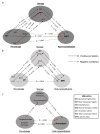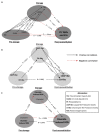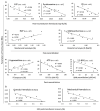Corpuscular Fragility and Metabolic Aspects of Freshly Drawn Beta-Thalassemia Minor RBCs Impact Their Physiology and Performance Post Transfusion: A Triangular Correlation Analysis In Vitro and In Vivo
- PMID: 35327331
- PMCID: PMC8945797
- DOI: 10.3390/biomedicines10030530
Corpuscular Fragility and Metabolic Aspects of Freshly Drawn Beta-Thalassemia Minor RBCs Impact Their Physiology and Performance Post Transfusion: A Triangular Correlation Analysis In Vitro and In Vivo
Abstract
The clarification of donor variation effects upon red blood cell (RBC) storage lesion and transfusion efficacy may open new ways for donor-recipient matching optimization. We hereby propose a "triangular" strategy for studying the links comprising the transfusion chain-donor, blood product, recipient-as exemplified in two cohorts of control and beta-thalassemia minor (βThal+) donors (n = 18 each). It was unraveled that RBC osmotic fragility and caspase-like proteasomal activity can link both donor cohorts to post-storage states. In the case of heterozygotes, the geometry, size and intrinsic low RBC fragility might be lying behind their higher post-storage resistance to lysis and recovery in mice. Moreover, energy-related molecules (e.g., phosphocreatine) and purine metabolism factors (IMP, hypoxanthine) were specifically linked to lower post-storage hemolysis and phosphatidylserine exposure. The latter was also ameliorated by antioxidants, such as urate. Finally, higher proteasomal conservation across the transfusion chain was observed in heterozygotes compared to control donors. The proposed "triangularity model" can be (a) expanded to additional donor/recipient backgrounds, (b) enriched by big data, especially in the post-transfusion state and (c) fuel targeted experiments in order to discover new quality biomarkers and design more personalized transfusion medicine schemes.
Keywords: biomarkers; donor variation; energy metabolism; fragility; purine metabolism; red blood cells; transfusion.
Conflict of interest statement
Though unrelated to the contents of this manuscript, A.D. declares that he is a founder of Omix Technologies Inc. and Altis Biosciences LLC and a consultant for Hemanext Inc.
Figures





References
-
- Dern R.J., Gwinn R.P., Wiorkowski J.J. Studies on the preservation of human blood. I. Variability in erythrocyte storage characteristics among healthy donors. J. Lab. Clin. Med. 1966;67:955–965. - PubMed
-
- Roubinian N.H., Plimier C., Woo J.P., Lee C., Bruhn R., Liu V.X., Escobar G.J., Kleinman S.H., Triulzi D.J., Murphy E.L., et al. Effect of donor, component, and recipient characteristics on hemoglobin increments following red blood cell transfusion. Blood. 2019;134:1003–1013. doi: 10.1182/blood.2019000773. - DOI - PMC - PubMed
-
- Kanias T., Sinchar D., Osei-Hwedieh D., Baust J.J., Jordan A., Zimring J.C., Waterman H.R., de Wolski K.S., Acker J.P., Gladwin M.T. Testosterone-dependent sex differences in red blood cell hemolysis in storage, stress, and disease. Transfusion. 2016;56:2571–2583. doi: 10.1111/trf.13745. - DOI - PMC - PubMed
LinkOut - more resources
Full Text Sources

